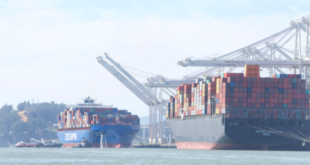Getting the two-day conference, a gathering of the public and private sector, is seen as a major coup for the Inland region and a sign it’s becoming a player in state politics. The summit’s goal is to solve regional problems, create economic growth, and promote better government, according to the event’s organizers.
A yearly gathering of business and political leaders from throughout the state, will be held next year in Ontario.
The 2015 California Economic Summit conference is scheduled to be held Nov. 12-13, probably at the Ontario Convention Center although final details are still being worked out, according to officials familiar with the event.
The summit’s goal is to find regional solutions that have widespread support, an approach to problem-solving that is becoming popular among state leaders, according to a statement by Jim Mayer, California Forward’s chief executive officer.
The conference is a collaboration between California Forward, a public advocacy group that focuses on government reform, and the California Stewardship Network, also a public advocacy group.
The first session was held in Santa Clara in 2012, followed by Los Angeles last year and a meeting last summer in Sacramento. The Ontario summit is expected to attract between 400 and 500 people.
Officials with the economic summit’s [California Forward] steering committee selected the Inland Empire because of the region’s growing impact on California’s economy, particularly in the all-important logistics sector, which is becoming more important to the state’s economy as it trades more with foreign countries, said Ed Coghlan, spokesman for California Forward.
“What you have in California is a series of regional economies, not just one economy, and the Inland Empire is becoming one of the state’s most important regions,” Coghlan said. “The Inland Empire is becoming the logistics capital of the west coast, and logistics is going to be a big part of the 21st century economy, which is what the summit is about.”
Officials from California’s public and private sector will gather to work on a broad public policy agenda that will help bring about economic growth. Business and environmental issues will also be up for discussion, Coghlan said.
Originally, several public advocacy groups – including California Forward and the Stewardship Network – held regional economic meetings up and down the state. Regional sessions are still held, but eventually the participants realized it would be even more productive to hold a statewide meeting once a year.
“We held 16 meetings one year,” Coghlan said. “We had a meeting on manufacturing, one on infrastructure, one on logistics, and one on the state’s workforce. Then we decided everyone should meet once.”
This year’s meeting, held in August in Sacramento, attracted about 400 people, including an estimated 250 civic leaders. The session, which built upon ideas produced during the first two summits, produced a statewide economic strategy designed to train workers for the 21st century economy and produce affordable, sustainable communities.
Besides training workers for the new high-tech economy, this year’s conference identified managing community growth and solving the state’s water problems as issues for long-term consideration.
Paul Granillo, president and chief executive officer of the Inland Empire Economic Partnership, deserves much of the credit for getting the economic summit into the Inland Empire, Coghlan said.
“We were in Silicon Valley the first year, then Sacramento and Los Angeles this year,” Coghlan said. “It made sense to go to the Inland Empire next year, not only because it’s been such an important part of the state’s economic recovery, but also because it’s become a microcosm of California’s economy.”
Granillo, who is co-chairman of California Forward’s steering committee and is part of the California Stewardship Network, called next year’s summit “a wonderful opportunity” for the Inland region to get its message out to the state’s business community and political leaders.
“The California Economic Summit is an initiative that is grappling with the realties of California’s economy,” Granillo said in a statement. “Some regions of the state are doing very well, some are doing less well, but the summit process treats every region equally in the discussion.”
The IEEP – a San Bernardino-based non-profit agency that promotes job creation and business recruitment in Riverside and San Bernardino counties – approached Ontario about hosting the California Economic Summit and the city jumped at the opportunity, said John Andrews, Ontario’s economic development director.
The economic summit is an opportunity for officials to learn about what’s happening in other parts of the state. It’s also a chance for elected officials and members of the private sector to exchange ideas, something that doesn’t happen often, Andrews said.
“We think hosting the economic summit will give the Inland Empire a lot of credibility with the rest of the state,” Andrews said. “It says the region is an economic force, which it is. It’s a force in home building, which is starting to pick up momentum again, and it’s a force in logistics and manufacturing.”
Ontario and the rest of the Inland region can use the summit to advertise that the two-county region is a good place to do business, Andrews said.
The Inland Empire deserves to be recognized by the rest of the state if only because it’s among the fastest growing areas in California, said Jordan Levine, director of economic research for Beacon Economics in Los Angeles.
“It’s become a major part of the state’s economy, which is what we’ve been saying for a long time,” Levine said. “It’s also one of the best places in the state for economic growth. I’m sure that will come out during the summit.”
Getting leaders from the public and private sectors together on such a large scale so they can discuss major issues is long overdue, Levine said.
“It’s good to get a statewide dialogue going on these issues,” Levine said. “People need to know what’s going on in parts of the state, especially now that the recession is over and we can do something about these problems.”
 IE Business Daily Business news for the Inland Empire.
IE Business Daily Business news for the Inland Empire.


